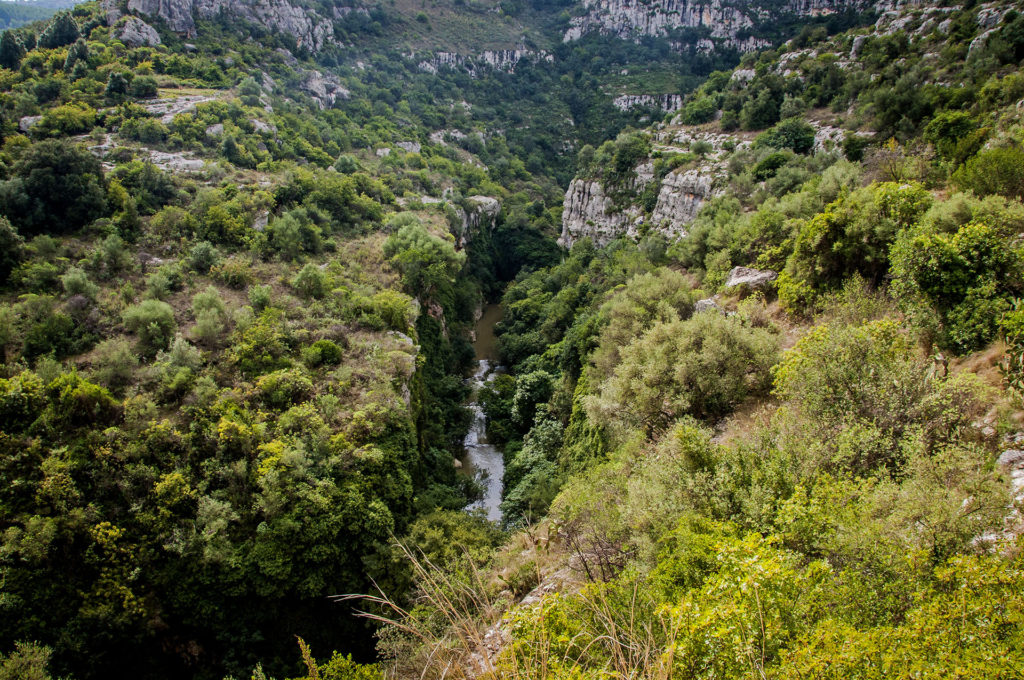One of Sicily’s main archaeological areas, Pantalica is a site in the province of Syracuse located on the plateau of the Hyblaean Mountains, between the municipalities of Ferla and Sortino.
In the first half of the 13th century BC, the coastal townships of the Thapsos Culture suddenly abandoned all the villages on the coast due to frequent raids and the arrival of new populations from the sea (Sicels, Ausones, Morgetes and other Italic populations).
The native inhabitants found refuge inland, in Pantalica, a natural fortress bordered to the north by the Calcinara stream and to the south by the Anapo river.
In the lush greenery of Pantalica, among ancient houses and funeral chambers, legend blends with history. According to some scholars the ancient city of Herbessus, an important township in ancient Sicily, can be clearly identified with Pantalica, a name that dates back to the Byzantine or Saracen era. According to others, Pantalica corresponds to ancient Hybla, a Sicilian kingdom that from the 13th to 8th centuries BC extended from the Anapo valley to Syracuse.

Pantalica was probably a rich, densely populated metropolis. All that remains of this mythical city is the immense necropolis of around five thousand
cave tombs
, arranged along the slope of the mountain and dug into the rock for up to seven stories. The ancient city consisted of a series of elliptical huts made of straw and branches and developed around a large palace, the remains of which have survived to this day. This palace was the
Anaktoron
, the likely home of the legendary King Hyblon. The archaeological excavations conducted by
Paolo Orsi
brought to light artefacts dating back to two different historical periods: a prehistoric, Siculan or pre-Hellenic age, and a historical age. According to the famous Italian archaeologist, four necropolises are found on the site: the north-western necropolises dating back to a period between 1270 and 1000 BC; the necropolis of Cavetta; the southern necropolises; and the necropolises of Filiporto, dating back to 850 BC.
Traces of the prehistoric settlement of Pantalica stopped abruptly in the 8th century BC then reappeared in the Middle Ages, around the 6th century AD, in the Byzantine period, when the raids of barbarians, pirates then Muslims in the 9th century forced the populations to seek safety in this inaccessible place.
The pre-existing caves of the ancient necropolis were used and enlarged, transformed into houses, hermitages or churches, such as the Grotta del Crocifisso, the Church of San Micidiario or that of San Nicolocchio where you can still see traces of ancient frescoes.